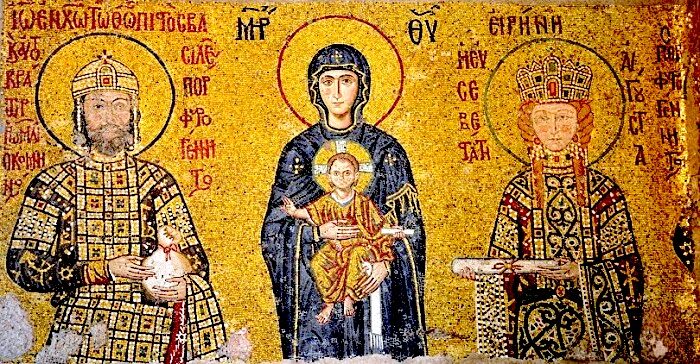
© Hagia SophiaMosaic of John Komnenos – Eirene – Alexios, 13th century
The mosaics of Hagia Sophia are world-renowned priceless artifacts not only of Greek Orthodoxy but also of Byzantine Civilization and Hellenism.
What is lesser known is that the hagiographies inside the Cathedral were restored by an American man before it was turned into a museum in 1935.The name Thomas Whittemore may not mean much to many, but the American academic and amateur archaeologist and restoration expert is the man responsible for the restoration of the Byzantine mosaics that adorn Hagia Sophia.
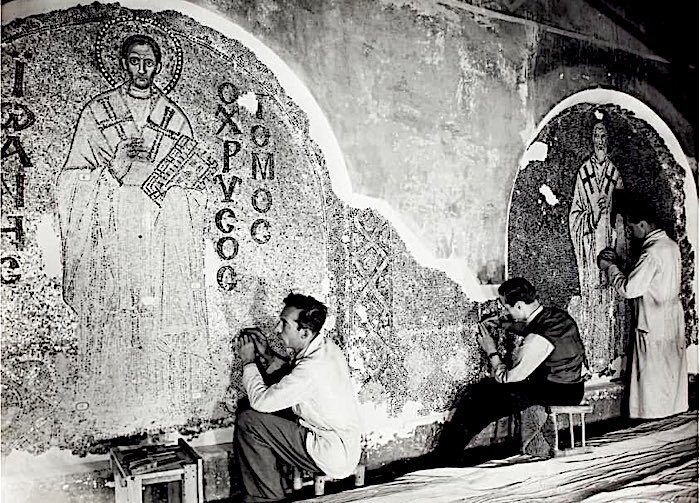
© UnknownWhittemore’s team works to restore Hagia Sophia mosaics and icons.
While the fascinating mosaics were covered and uncovered multiple times throughout its 1,500 year history, their present state owes a great deal to Whittemore.
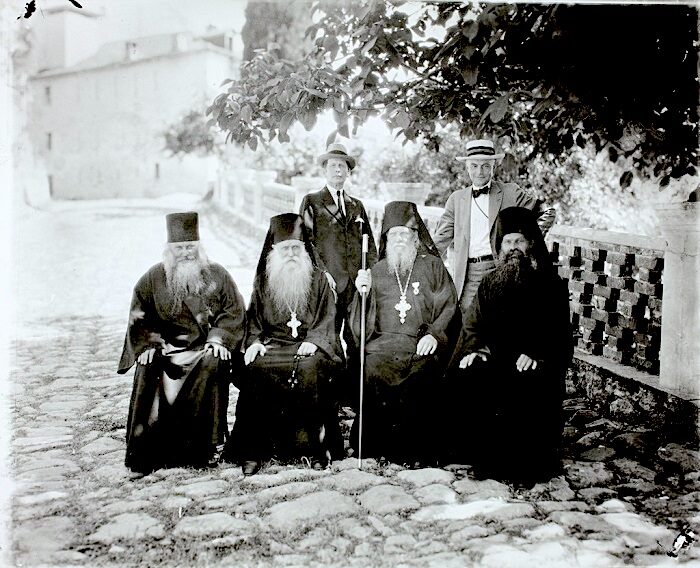
© UnknownWhittemore at Mount Athos (back row, on the left), c.1923
The arduous and painstaking work of restoring the historic Byzantine mosaics began in 1932 continued for about 18 years, long after the cathedral reopened as a museum.
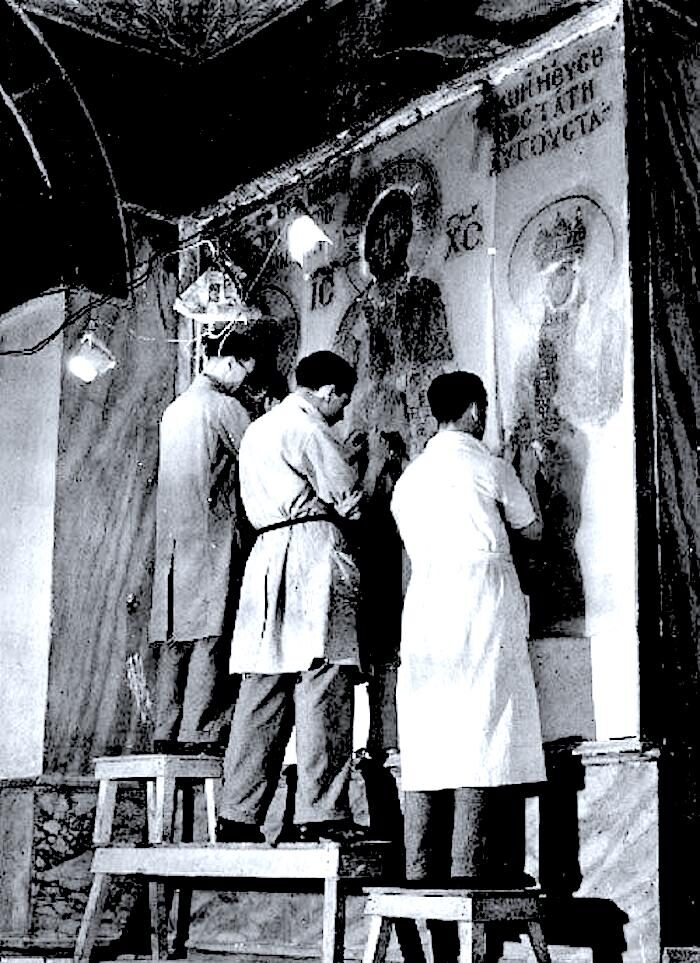
© UnknownRestoration continues.
Born on January 2, 1871, Whittemore was the only child of real estate and insurance broker Joseph Whittemore and Elizabeth St. Clair Whittemore.
He was named after his grandfather, the Reverend Thomas Whittemore, who had been a prominent minister and
a co-founder of Tufts College in Boston.Whittemore began his studies at Tufts in 1889, graduating in 1894 with a bachelor's degree in English Literature, whereupon he was hired by the Tufts English Department. He enrolled in Harvard University's Graduate School of Arts and Sciences to study Fine Arts.
He introduced art, history and culture of ancient civilizations into the Tufts curriculum in the early 1900s.
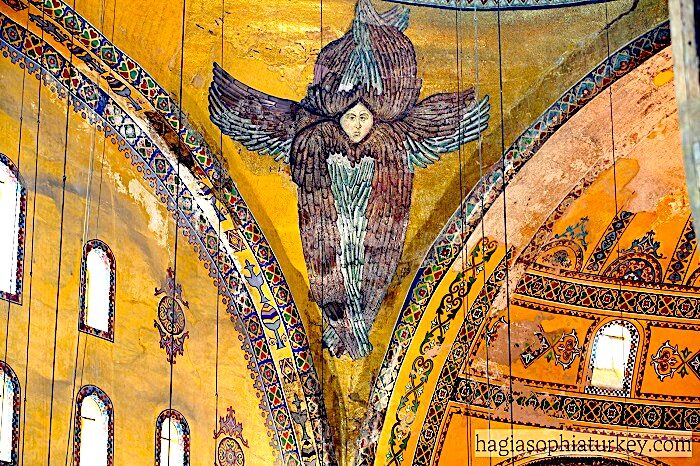
© Hagia SophiaSeraphic angel mosaic, 9th century
While Whittemore never graduated from Harvard, his fascination with antiquity only grew. He made several trips overseas, taking a leave of absence from Tufts in 1908 to study architecture at the Sorbonne in Paris. He visited several countries in Europe, including England, Italy, Russia, Bulgaria, and Germany.
Several scholars believe that he was influenced by Byzantine enthusiast Matthew S. Prichard, who was at the time an affiliate of the Museum of Fine Arts in Boston.
In 1908, Whittemore was invited to teach a course on ancient Egypt and Greece as part of a summer program at Columbia University. In the spring of 1910, he became a docent in the Egyptian Department at the Museum of Fine Arts, Boston.
In 1911 he was named the American Representative for the British-run Egypt Exploration Society, and he then traveled to Egypt in order to assist with ongoing excavations. His new assignment forced him to resign from Tufts.
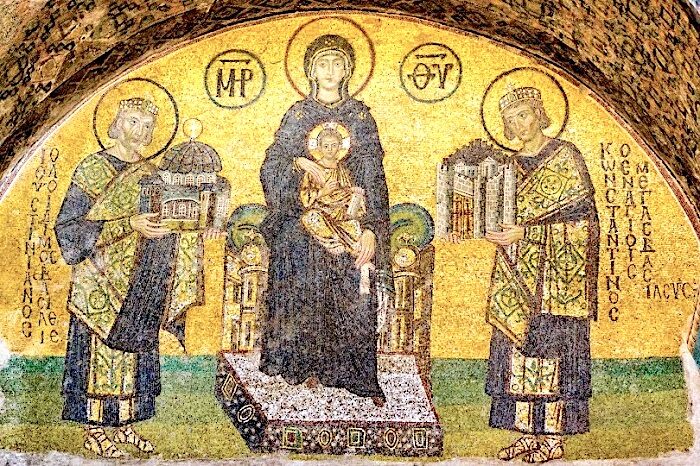
© Hagia SophiaJustinian, Christ, Mary and Constantine, 10th century mosaic
Whittemore returned to academia in 1927 when New York University invited him to teach a course on Byzantine art, making him an Assistant Professor. He remained at the University through 1930, the year he founded the Byzantine Institute.
In 1931 he made the agreement with Mustafa Kemal Ataturk to restore the precious hagiographies of Hagia Sophia, the project turning into one of the most important restoration works not only for the Byzantine Civilization but World Civilization as well.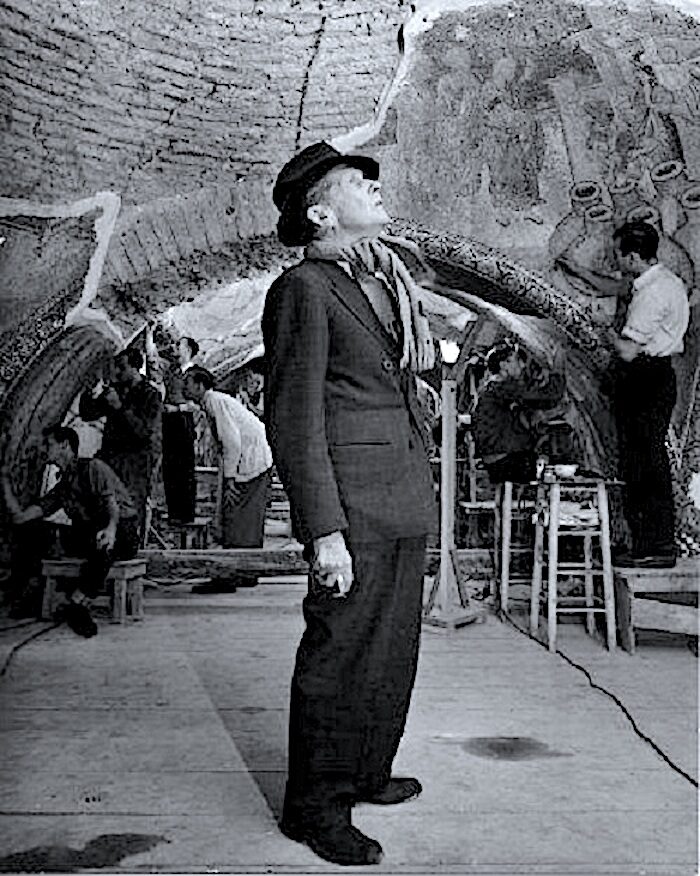
© UnknownThomas Whittemore supervising the restoration works at Hagia Sophia.
In his own words,
"Santa Sophia was a mosque the day that I talked to him. The next morning, when I went to the mosque, there was a sign on the door written in Ataturk's own hand. It said: 'The museum is closed for repairs'."
Whittemore's invaluable work was recognized by not only academia but the U.S. government as well. In 1934, Harvard University appointed him keeper of Byzantine coins and seals at the Fogg Art Museum for one year.
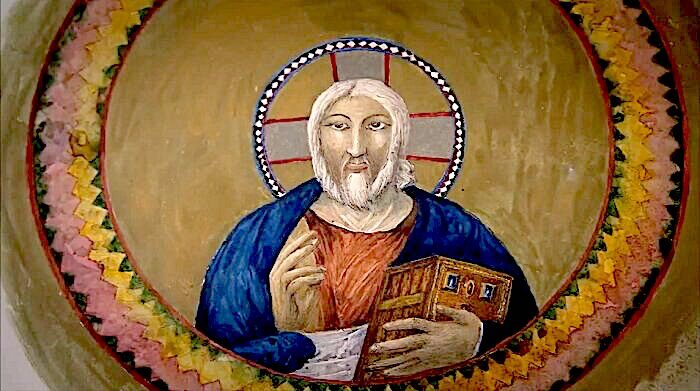
© Hagia SophiaHagia Sophia’s mosaic of Christ Pantocrator
He was also appointed by president Franklin D. Roosevelt to represent the United States at the Byzantine Conference in Sofia in September of that year.
In 1942, the
New York Times noted Whittemore's return to Istanbul for his "ninth year in uncovering Byzantine mosaics in the St. Sophia Museum".
In 1953, after Whittemore's death, on June 8, 1950, the archives of his brainchild, the Byzantine Institute, were handed over to the
Dumbarton Oaks Hagiography Database.
R.C.